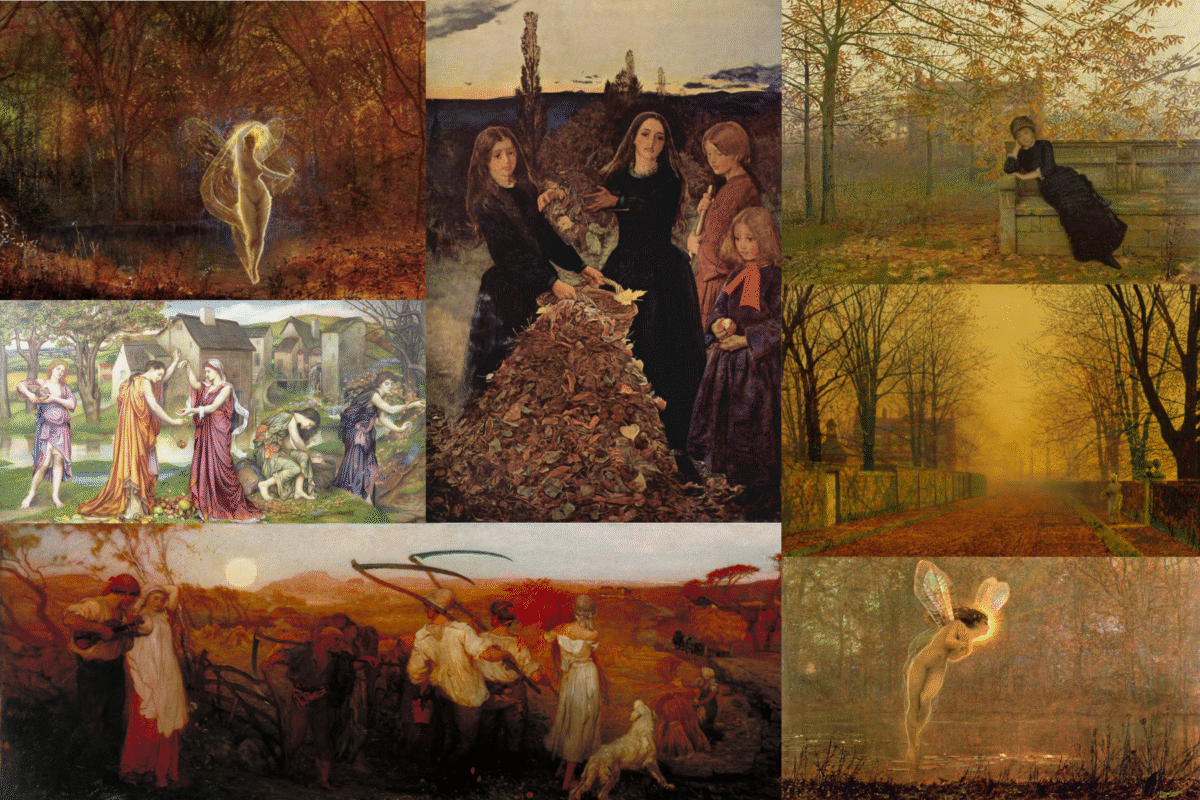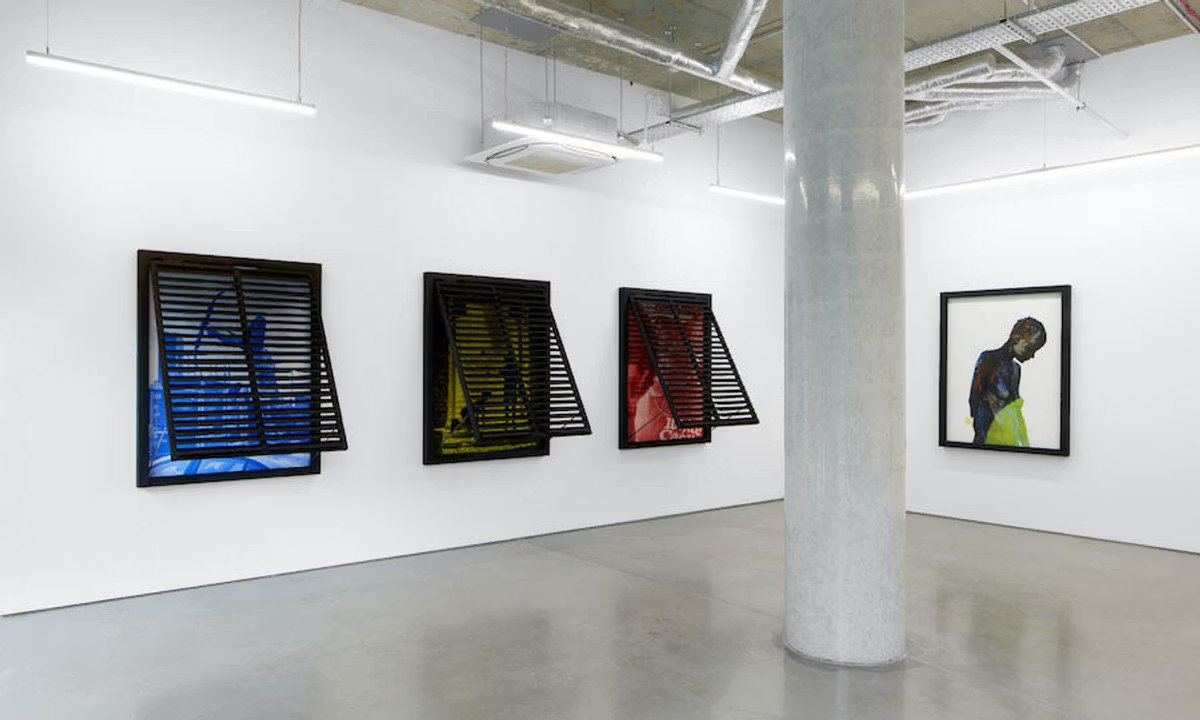By Imogen Sabharwal
The start of the academic year here perfectly coincides with the melting away of summer into autumn, where nature takes on a new beauty even as the leaves are dying, suggestive of new beginnings much like its transitional-season cousin, spring. The mutability of the seasons can often be comforting as well as exciting, a materialised change bringing something new, though not without leaving something behind. This bittersweet sense is characteristic of autumn, found in the beauty and opportunities that lie ahead despite the fading summer fun.
Autumn’s beauty, with its startling reds and golds have naturally inspired artists across centuries, leaving us to enjoy many atmospheric depictions of the ‘-ber’ months. Hopefully the following curation of autumnal paintings, particularly Victorian and Pre-Raphaelite era pieces, will inspire some connection with new and returning Durham students ready to begin a fresh new year, particularly since the city is arguably, at its most beautiful in autumn.
With a new academic year, work and routines begin to make up part of every student’s life, and autumn has historically been associated with ritual, harvest being a notable example. In ‘The Harvest Moon’ by George Mason, a group of harvesters are cast in the warm, rich atmosphere of the twilight, with the luminous moon over the hilly horizon shedding light on their play and rest, a break from the labour of harvest characterised by the large central scythes. Mason’s idyllic, pastoral scene romanticises the rural workers, and though the ignorance of the arduous reality of harvest time in the Victorian era is a valid critique, it is certainly an idea that can be extrapolated onto the Durham student; a reminder to enjoy and indulge in the season’s natural beauty alongside the work and maintenance that must be attended to!

The cyclical nature of the seasons ensure the decay isn’t permanent, the fruit will grow again
‘The cadence of Autumn’ by pre-Raphaelite painter Evelyn de Morgan features five women dressed in the shades of the seasonal fruit they collect and stash into nets, though a magical quality is seemingly bestowed upon the scene in the manner of the windswept leaves, bringing an animated, playful quality to their work and the painting itself. As the robe colours gradually become more muted travelling from left to right, along with the fruitfulness of the trees, the passing of time is captured horizontally, a visual representation of the titular cadence, a musical closing of one season for another to begin. This painting I believe both aptly captures the earthly activity the changing seasons encourages, whilst conveying the slightly more melancholic side with the barren tree and the fading colours – ultimately though, the cyclical nature of the seasons ensures the decay isn’t permanent, the fruit will grow again.

John Everett Millais’ ‘Autumn Leaves’ depicts a group of young girls gathered in autumnal activities and ritual. Like many other autumnal paintings taking place at sunset or twilight, it is captured in the setting day, a liminal time reflective of the transience and liminality of the season itself, a period with a haunting, otherworldly beauty. The girls are laden with autumnal symbols, from the palette of their dresses, varying in material signifying perhaps their differing economic statuses, to the objects they interact with, dead leaves and an apple, earthly engagement with tangible symbols of the dying season. Millais is quoted by William Holman Hunt saying ‘Is there any sensation more delicious than that awakened by the odour of burning leaves? To me nothing brings back sweeter memories of the days that are gone; it is the incense offered by departed summer to the sky, and it brings one a happy conviction that Time puts a peaceful seal on all that has gone’. I feel this moody painting conveys Millais’ evident sensorial appreciation of the season, with the painted smoking leaves suggesting the girls are similarly inspired to nostalgic reverie at the incense.

“Is there any sensation more delicious than that awakened by the odour of burning leaves?”
John everett millais
Autumnal atmosphere is one of the bigger draws to the ephemeral season, and an essence that is repeatedly captured to perfection by John Atkinson Grimshaw. The Victorian-era painter is known for his moody urban scenes, at once real and dreamlike, describing his own art genre as ‘moonlight realism’. His autumnal pieces are imbued with a glowing, enveloping ambience with landscapes like ‘Evening Glow’ capturing this, while ‘Autumn Regret brings a human subject to the foreground, exploring a woman’s relatable pensiveness inspired by the leaves around her, the painting’s title suggestive of the bittersweet impression highlighted earlier. While all his paintings contain a dreamlike quality, despite usually depicting an everyday location, some are more overt in a kind of magical realism, including fairy creatures sparkling and glittering against the deep, dense orange foliage. One of the most rich and glittering of these is ‘Dame Autumn has a mournful face’ which depicts a mystical and sombre scene centralising a majestic figure, the titular personification of Autumn. She is a luminous, ethereal entity, glowing with the vibrant reds and oranges of the foliage around her, which appears to glitter in response. The gossamer quality of her wings and cloak, combined with the deep shadows and sparkling light imbue the work with a dreamlike vibe, a serenity that also feels quite sombre – the season possesses the ephemeral essence of a realm that you can’t quite tell if it is real or not.

Ultimately, autumn’s simultaneous melancholy and beauty has forever inspired rich artwork, capturing the season’s rituals, magic, serenity, and suitability for reflection and deep thought, as well as using its earthly, natural products as symbols of fleeting, passing time, decay and mutability, and the inevitable change that comes with new seasons and chapters, all with a warm, golden palette.
Images: George Mason via Creative Commons, Evelyn de Morgan via Creative Commons, John Everett Millais via Creative Commons, John Atkinson Grimshaw via WikiArt, Featured Image via Creative Commons and Canva
: Autumnal artworks: capturing the season’s bittersweet beauty







